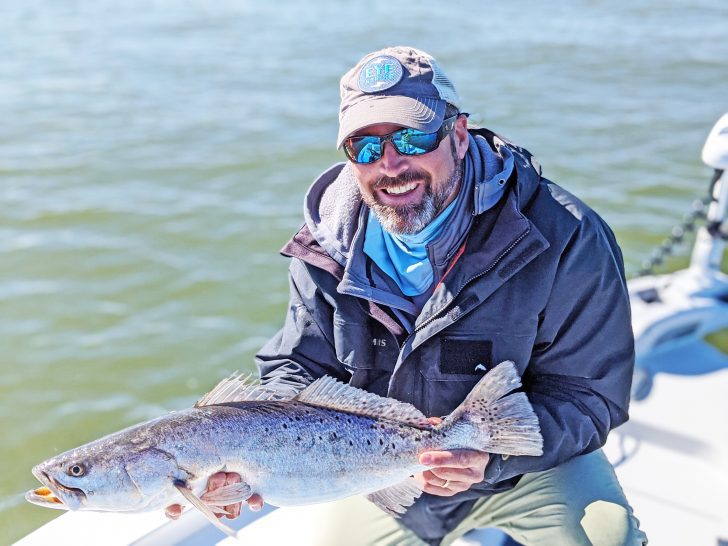Launching in the pre-dawn, we turn on the nav lights and head cautiously to our desired spot: A gravelly shallow point, with the outgoing tide pushing against it.
We shut down the big motor far from the bank, and ease in slowly and quietly on the trolling motor. We make a long cast, guessing at the distance to the bank as we can’t really see where our topwater plugs will land.
A turkey gobbles in the nearby woods as we listen to our plugs clack-clack, with random pauses. Suddenly a splash, and drag peels off the reel. Unseen, we are left to guess at the size based on the frequency of the head-shakes. This is the essence of trout fishing in April.
Now through June will be your best opportunity to catch your biggest speckled trout of the year. The big ones are almost always female and need to fatten up for the spring spawn – thus they are feeding on larger baits.
Your best chance for a gator trout on artificial will be using a topwater plug, or suspending lure. Jig heads and soft plastics will also work but require, in my opinion, more skill to catch the big girls.
Thanks to our friend Chris Bush, of the Speckled Truth on social media, we know more than ever about how to target large trout.
We know that your best chance of catching a big one will be a few days either side of the full and new moons, corresponding to solunar periods.
In Charleston, solunar periods generally correspond to the high and low tides, along with sunrise and sunset.
In my personal experience, I believe that big trout only feed in short windows of time – approximately 30 -45 minutes. What causes the switch to be flipped, I wish I knew, but I have some theories.
Anyone can catch a big trout by chance, but to catch them on purpose is a whole different thing. First of all, you need to be where big trout live, with the right lure in the water, when the feeding window opens. This is often more of a grind than most people are willing to commit to.
Are you willing to go all day without a bite, in hopes of catching a 25+ inch trout? There is no shame in not being that committed, but that’s often what it takes.
Where do big trout live? Of course, there are exceptions to every rule, but they seem to hang around very hard structure near deep water.
What are some examples? Rock walls, concrete, gravel, etc. There are examples literally everywhere in Charleston.
I’ll close with a conservation message. It’s very important that big trout be handled carefully and released to spawn. The number of eggs in a large trout is exponentially more than smaller trout.
They reached their size by being especially fast growing, resistant to cold or disease, etc. Therefore, it’s important to allow them to propagate these superior genetics to ensure great trout fishing for years to come.
Launch early, and we may see you there. Sleeping in is for teenagers!
David Fladd
Partner, Eye Strike Fishing
dfladd@eyestrikefishing.com
eyestrikefishing.com
You may also enjoy reading Jiggin’ Jerry’s D.O.A. Shrimp Makeover




